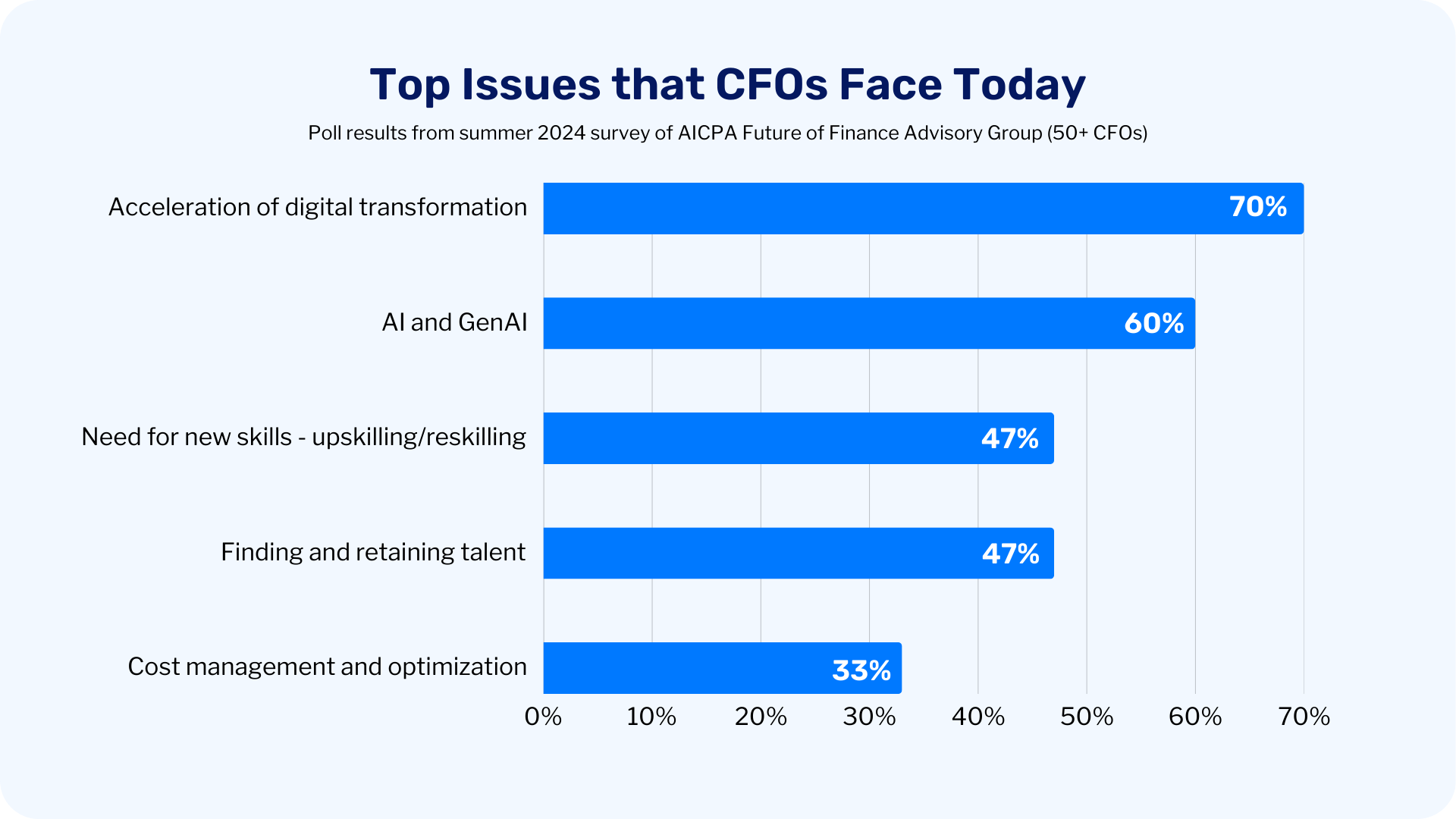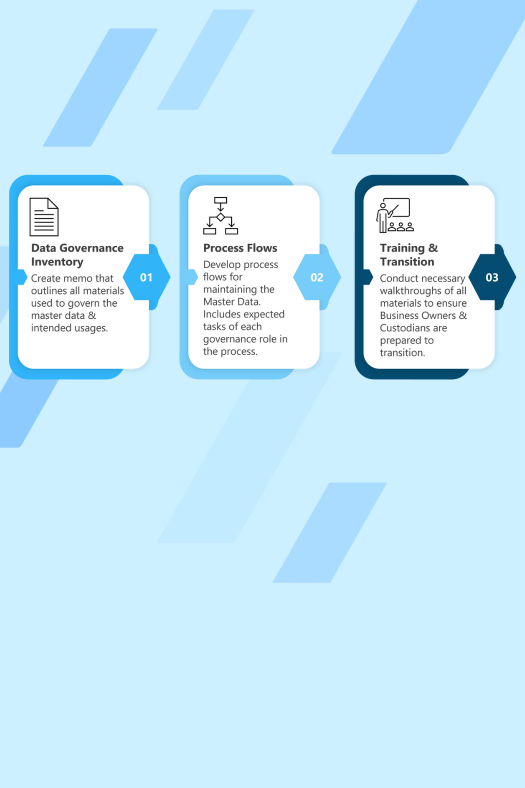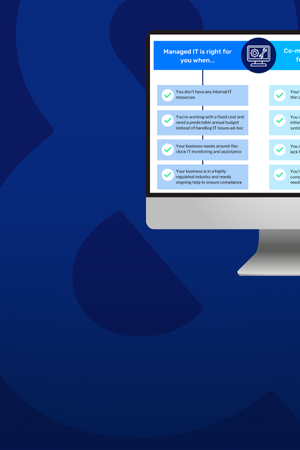Authored by Lauren Jackson | Senior Manager
and Mary Marc | Senior
Regardless of an organization’s size or industry, today’s C-suite is laser-focused on accelerating and executing enterprise transformation initiatives.
That’s because successful transformation leads to faster adoption of modern technology and processes (especially with AI/ML tools), more cost savings, and better resource management.
However, the path to successful transformation is often unclear and riddled with unanswered questions: Where should your organization start? Is transformation truly at the enterprise level, or more targeted? How do you stay on budget? And how do you effectively measure success?
A good starting point is setting the right foundation.
At SC&H, we’ve been living and breathing transformation for 20+ years. We’re sharing the key factors that make a successful enterprise transformation initiative, along with the common issues that sneak up in an organization’s blind spot and cause delays and cost overruns along the way.

Step 1: Set the Definition and Expectations
Before embarking on an enterprise transformation initiative, the essential first step is to clearly define what transformation means for your organization.
- Agree on a Shared Definition of Transformation
Transformation is perceived differently across the organization. The C-suite may emphasize strategic alignment and financial performance, while controllers and analysts focus on operational efficiency and data accuracy. Gathering insights from all levels is essential for a cohesive understanding, and specific goals should be tailored to each level. - Determine Completion Markers
You need a clear ending point to measure success. Setting clear goals and a unified definition of transformation helps your organization determine when your transformation is complete. While there will always be new opportunities, having clear completion markers ensures a focused vision, accountability, and momentum.
Step 2: Formulate the Team
Next, establish a dedicated team (ideally led by the CFO) to drive transformation goals. This team should include members with different skills to handle financial, digital, and operational changes effectively. Combining industry knowledge with technical skills helps the team address complex challenges and encourages collaboration across departments.
Step 3: Plan Your 6 Foundational Components
Once the transformation goals are set and the right team is in place, it is crucial to prioritize six key areas early on. Ignoring these can lead to delays and increased costs:
- Define Business Requirements
- Design a Modern, Enterprise-Grade Chart of Accounts
- Maintain Historical Data Lineage
- Plan for Data Conversion & Integration
- Build an Effective Reporting Strategy and Rationalization
- Automate & Optimize
Let’s talk about how to address each component to lay a strong foundation for successful enterprise transformation.
#1: Define Business Requirements
Leadership needs to define requirements based on the organization’s goals and competitive environment. This process involves more than just IT; it requires input from all stakeholders, including employees and external partners, to understand challenges and opportunities. Key areas to focus on are:
- Setting clear KPIs that align with strategic goals, and
- Creating a shared vision to ensure everyone is on the same page during the transformation
With the requirements in place, organizations can start the systems selection process to choose a technology solution. This includes analyzing requirements, assessing the market for suitable vendors, participating in vendor demos and pilot programs, and evaluating the risks of each option.
After selecting the technology, the next step is to design process flows that integrate business needs with the chosen technology. This includes mapping workflows, identifying dependencies, focusing on user experience, and refining the design based on feedback and technological changes.
#2: Design a Modern, Enterprise-Grade Chart of Accounts
Enterprise Transformation often requires transitioning to a modern ERP system and complimentary EPM/CPM solutions for consolidations/planning/forecasting. This involves creating or rationalizing a new chart of accounts (CoA) for future data collection and reporting. The CoA must prioritize flexibility, scalability, and stakeholder involvement to ensure accurate financial reporting.
Establishing the new CoA should be treated as a critical path activity and initiated as early as possible. A system-agnostic approach allows organizations to focus on core requirements without being limited by technology constraints. This initial phase should emphasize:
- High-Level Framework Development: Creating a foundational structure that can be refined later based on specific ERP capabilities.
- Iterative Design Process: Involving cross-functional teams to iteratively refine the CoA as technology and business needs evolve.
In conjunction with the CoA, organizations must define a comprehensive data model that supports consolidation, planning, reporting, and operations. This model should encompass:
- Statistical Data and KPIs: Identifying key metrics and performance indicators necessary for effective decision-making.
- Holistic View Creation: Ensuring that the data model provides a complete perspective of the organization’s financial and operational performance.
#3: Maintain Historical Data Lineage
Converting and validating historical data is essential for successful transformation, even though it can be time-consuming and expensive. Organizations should rationalize their historical data sets by cataloging valuable data, reviewing transactions and balances to identify what needs conversion, and defining source-to-target mappings for the new chart of accounts (CoA). This includes detailed documentation of data transitions and setting up validation procedures to ensure data integrity.
Make sure you budget enough time and resources for data validation. While external consultants can help with technical validation, it’s important for your internal staff, who understand the source data best, to approve the final data in the new system and ensure it matches historical reports.
#4: Plan for Data Conversion & Integration
To successfully implement new financial systems, your organization needs a strong framework that includes clear data requirements for historical and current data integrations and a governance structure for managing data. A detailed reconciliation and validation plan helps ensure data accuracy during conversion and integration, with step-by-step procedures for consistency and protocols for addressing discrepancies.
You should also identify and automate recurring validation processes to reduce human error and save time. This can speed up your monthly reporting cycle and support a smooth transition to your new system.
#5: Build an Effective Reporting Strategy and Rationalization
Now that your data is cleaned up, you need an efficient reporting strategy that gives you accurate, reliable insights.
Reporting Transformation Steps:
- Inventory Current Reports: Take inventory of existing financial, management, and operational reports, categorizing them by purpose and audience to understand their usage patterns and value.
- Evaluate the Inventory and Rationalize: Decide which reports (and contents, including metrics, KPIs, etc.) are necessary to migrate, enhance or recreate in the future state. This is a good time to eliminate duplicative reports.
- Identify Future-State Reporting Channels: Deciding the best system/technology/tool for required reports keeps your scope and budget in check while still meeting stakeholder needs. A good rule of thumb is to build transaction/real-time reports in the source system for day-to-day stakeholders, and leverage BI and Analytics platforms for enterprise reporting, dashboarding, and decision-making.
- Develop a Validation Strategy: A robust report validation strategy should accompany the reporting strategy by clearly defining source reports that feed into the new system and establishing thresholds for acceptable discrepancies to ensure report accuracy.
#6: Automate & Optimize
To get the most out of your enterprise transformation, focus on automating data movement and report production. Pinpoint the most critical integration points as automation opportunities to streamline data flow and reduce errors. Evaluate more complex or high-volume processes on a case-by-case basis for potential automation.
Creating a prioritized “hit list” of automation initiatives will guide ongoing optimization efforts, keep momentum going, and maintain alignment with your goals.
Need help getting started?
Starting an enterprise transformation project can be intimidating. If you need guidance, or just someone to answer your questions on how to address your organization’s needs, feel free to contact one of our experts today!





